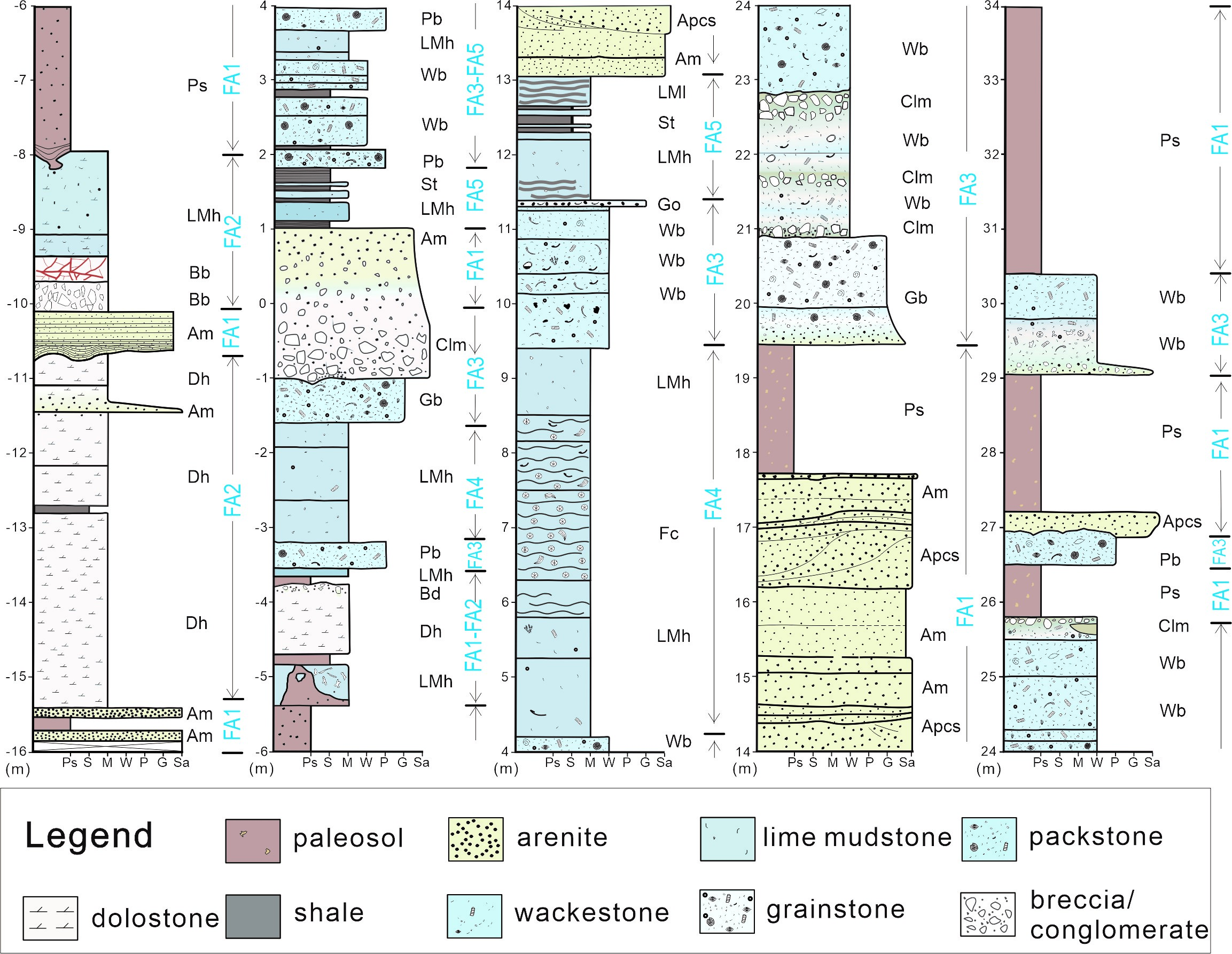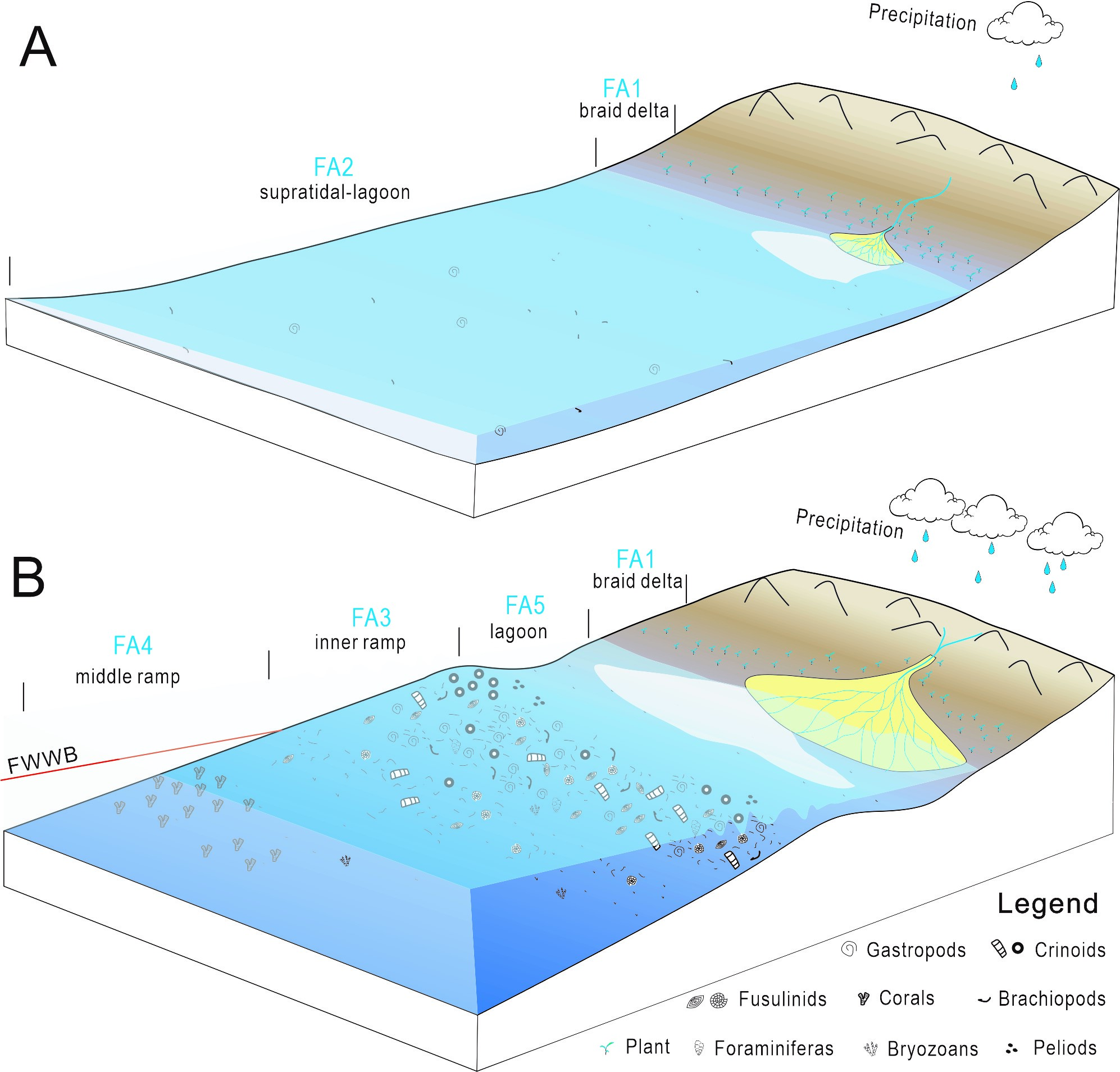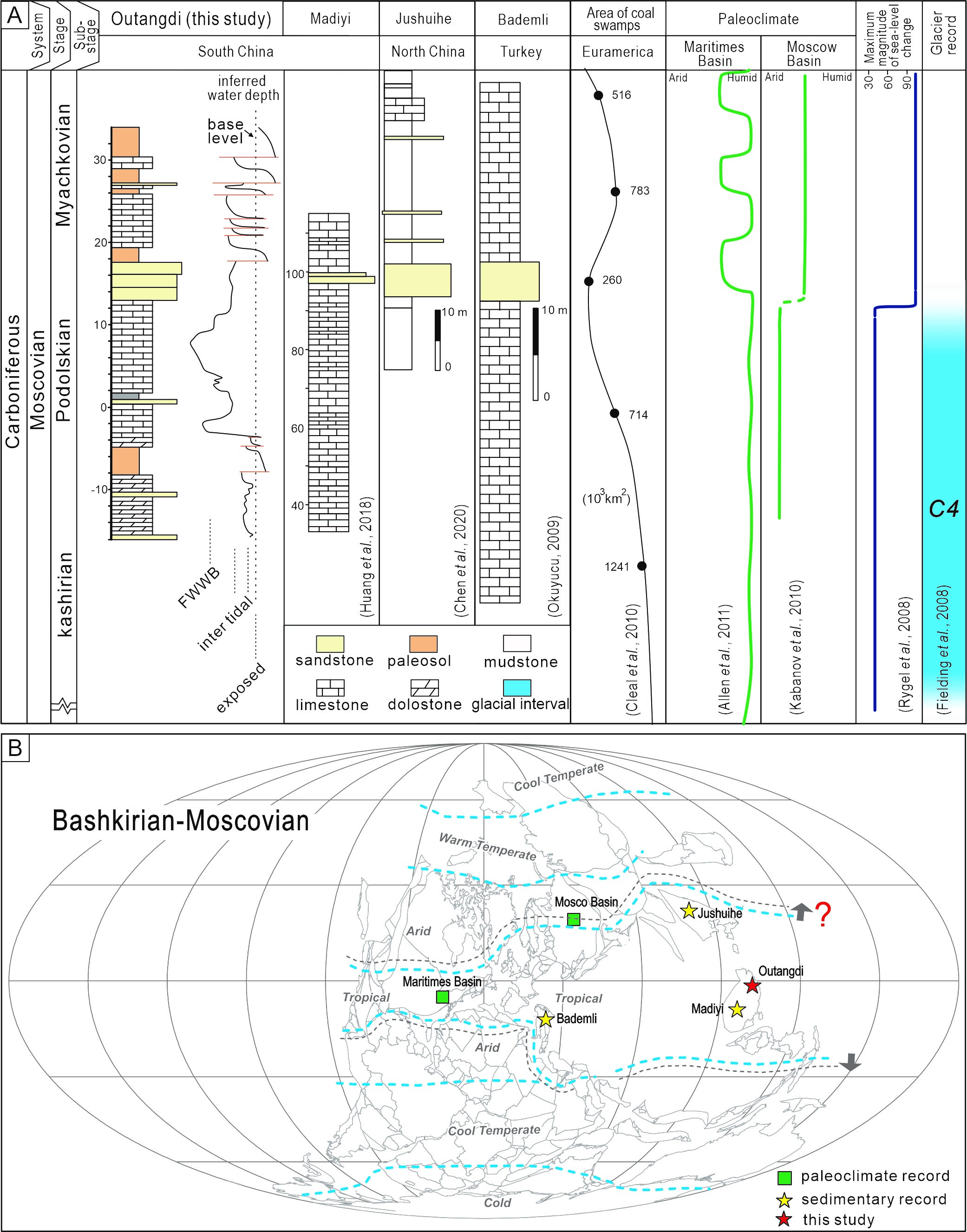The late Paleozoic Ice Age (LPIA) was the longest-lived icehouse of the Phanerozoic and the only geological archive that recorded a permanent icehouse-to-greenhouse turnover on a planet with complex terrestrial ecosystems and metazoan life. Recently, the LPIA has been widely studied especially regarding the temporal and spatial distribution of glaciers on high-latitude regions, the causes for the onset and demise of glaciation, correlations and feedbacks among various components of the Earth system, and influences on biodiversity variations. The water cycle in response to the evolution of LPIA is, however, rarely studied, except for numerical modeling
Paleoclimate simulations suggested a coupled relationship between Gandwanan ice volume and paleotropical climate dynamics on a multitude of timescales. General circulation models of the LPIA show that increased ice volume would intensify the Intertropical Convergence Zone (ITCZ) and resultant paleotropical precipitation. In contrast, climate simulations also indicate that increased precipitation in the tropical region would come along with atmospheric pCO2 and temperature rise. How precipitation in the paleotropical belt would react to changes in paleoclimate during the late Paleozoic is not well understood.
The South China Block was dominated by a stable carbonate platform environment during the middle to late Paleozoic (Fig. 1). In addition, the South China Block was situated near the paleoequator in isolation during the late Paleozoic until it collided with the North China Block in the Late Permian to Early Triassic. Hence, the South China Block was free of significant tectonic activities during the late Paleozoic
Recently, an integrated sedimentological and biostratigraphic study on a late Carboniferous mixed carbonate-siliciclastic succession (Fig. 2) from the southeastern South China Block is conducted by Dr. GAO Biao, Prof. CHEN Jitao, Prof. ZHENG Quanfeng, Dr. HUANG Xing, and Ph.D. student XIN Hao from the Nanjing Institute of Geology and Palaeontology, Chinese Academy of Sciences (NIGPAS), in collaboration with Dr. HU Keyi from Nanjing University.
The study established a high-precision biostratigraphic framework and recovered the sedimentary environment and its evolution based on sedimentary petrographic analysis, and identified an enhanced water cycle event due to climate changes during the Middle-Late Moscovian. The research achievements were published in the international journal Global and Planetary Change.
The conodont and fusulinid biostratigraphy indicate that the Outangdi succession formed during the middle to late Moscovian. Twelve facies and five facies associations have been recognized in the Outangdi section, which suggest an overall carbonate ramp environment episodically interrupted by siliciclastic influx of braid delta (Fig. 3). An anomalous siliciclastic deposit (with thickness of ca. 5 m) around the Podolskian substage has been recognized in the Outangdi succession. Such an abrupt siliciclastic influx event has also been recorded in the Madiyi succession in central South China, as well as other sections in the tropical peri-Paleotethys regions in the late Moscovian. This abrupt increase of siliciclastic influx reflects an enhanced water cycle in the paleotropical zone due to climate changes responding to the demise of C4 glacial interval in the late Moscovian (Fig. 4).
The research is supported by the National Natural Science Foundation of China, the Strategic Priority Research Program of the Chinese Academy of Sciences.
Reference: Gao, B., Xin, H., Huang, X., Hu, K.Y., Zheng, Q.F., and Chen, J.T.* (2022), A record of enhanced water cycle in the late Paleozoic icehouse, Global and Planetary Change. 218, 103957. https://doi.org/10.1016/j.gloplacha.2022.103957.

Figure 1. Tectonic framework and paleogeographic map of the Cathaysia Block during the late Carboniferous and location of the study area.

Figure 2. Detailed sedimentologic logging of the Outangdi section.

Figure 3. Depositional model. (A) Lower Outangdi succession (from -15.9 m to -3.8 m). (B) Upper Outangdi succession (from -3.8 m to 34.0 m).

Figure 4. Global correlation of stratigraphy and inferred paleoclimate events during the Moscovian. (A) Synthesis of late Moscovian sedimentary and paleoclimate records in the paleotropical zone. (B) Paleogeographic map marked with paleoclimate belts in the late Carboniferous.
Contact:
LIU Yun, Propagandist
Email: yunliu@nigpas.ac.cn
Nanjing Institute of Geology and Palaeontology, Chinese Academy of Sciences
Nanjing, Jiangsu 210008, China
A record of enhanced water cycle in the late Paleozoic icehouse
